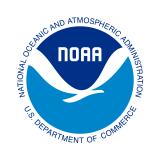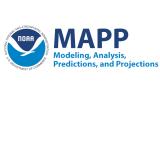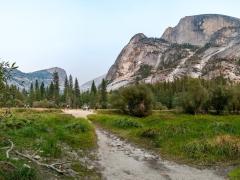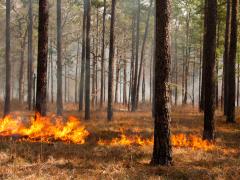Changing Climate Behind Sharp Drop in Snowpack Since 1980s
Study finds steepest drops in areas of the Northern Hemisphere reliant on snow for water.
Scientific data from ground observations, satellites, and climate models have not agreed on whether climate change is consistently chipping away at the snowpacks that accumulate in high-elevation mountains and provide water when they melt in spring. This complicates efforts to manage the water scarcity that would result for many population centers.
A new Dartmouth study cuts through the uncertainty in these observations and provides evidence that seasonal snowpacks throughout most of the Northern Hemisphere have indeed shrunk significantly over the past 40 years due to human-driven climate change. The sharpest global warming-related reductions in snowpack—between 10% to 20% per decade—are in the Southwestern and Northeastern United States, as well as in Central and Eastern Europe. The study was funded in part by NIDIS through the NOAA Climate Program Office Modeling, Analysis, Predictions, & Projections (MAPP) program.
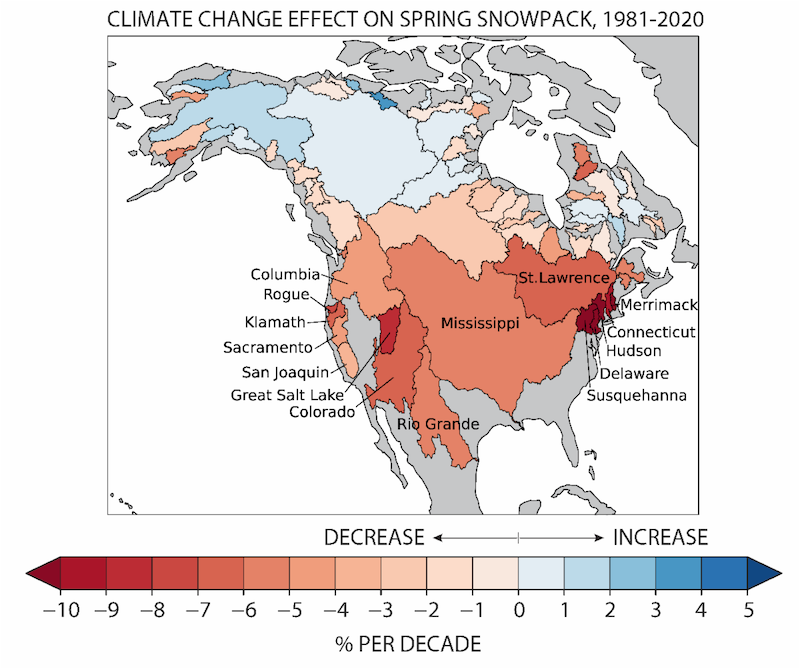
Dartmouth researchers Alexander Gottlieb and Justin Mankin report in the journal Nature that the extent and speed of this loss potentially puts the hundreds of millions of people in North America, Europe, and Asia who depend on snow for their water on the precipice of a crisis that continued warming will amplify.
“We were most concerned with how warming is affecting the amount of water stored in snow. The loss of that reservoir is the most immediate and potent risk that climate change poses to society in terms of diminishing snowfall and accumulation,” said Gottlieb.
“Our work identifies the watersheds that have experienced historical snow loss and those that will be most vulnerable to rapid snowpack declines with further warming,” Gottlieb said. “The train has left the station for regions such as the Southwestern and Northeastern United States. By the end of the 21st century, we expect these places to be close to snow-free by the end of March. We’re on that path and not particularly well adapted when it comes to water scarcity.”
Water security is only one dimension of snow loss, said Mankin, an associate professor of geography and the paper’s senior author.
The Hudson, Susquehanna, Delaware, Connecticut, and Merrimack watersheds in the Northeastern U.S., where water scarcity is not as dire, experienced among the steepest declines in snowpack. But these heavy losses threaten economies in states such as Vermont, New York, and New Hampshire that depend on winter recreation, Mankin syid—even machine-made snow has a temperature threshold, one that many areas are fast approaching.
“The recreational implications are emblematic of the ways in which global warming disproportionately affects the most vulnerable communities,” he said. “Ski resorts at lower elevations and latitudes have already been contending with year-on-year snow loss. This will just accelerate, making the business model inviable.”
“We’ll likely see further consolidation of skiing into large, well-resourced resorts at the expense of small and medium-sized ski areas that have such crucial local economic and cultural values. It will be a loss that will ripple through communities,” Mankin said.
In the study, Gottlieb and Mankin focused on how global warming’s influence on temperature and precipitation drove changes in snowpack in 169 river basins across the Northern Hemisphere from 1981 through 2020. The loss of snowpacks potentially means less meltwater in spring for rivers, streams, and soils downstream when ecosystems and people demand water.
"The train has left the station for the Southwestern and Northeastern United States. By the end of the 21st century, we expect these places to be close to snow-free by the end of March."
– Alexander Gottlieb, Guarini PhD Candidate in Ecology, Evolution, Environment, and Society, Dartmouth
Gottlieb and Mankin programmed a machine learning model to examine thousands of observations and climate-model experiments that captured snowpack, temperature, precipitation, and runoff data for Northern Hemisphere watersheds.
The researchers identified the uncertainties that the models and observations shared so they could hone in on what scientists previously missed when gauging the effect of climate change on snow. A 2021 study by Gottlieb and Mankin similarly leveraged uncertainties in how scientists measure snow depth and define snow drought to improve predictions of water availability.
“Snow observations are tricky at the regional scales most relevant for assessing water security,” Mankin said. “Snow is very sensitive to within-winter variations in temperature and precipitation, and the risks from snow loss are not the same in New England as in the Southwest, or for a village in the Alps as in high-mountain Asia.”
Gottlieb and Mankin found that 80% of the Northern Hemisphere’s snowpacks—which are in its far-northern and high-elevation reaches—experienced minimal losses. Snowpacks actually expanded in vast swaths of Alaska, Canada, and Central Asia as climate change increased the precipitation that falls as snow in these frigid regions.
But it is the remaining 20% of the snowpack that exists around—and provides water for—many of the hemisphere’s major population centers that has diminished. Since 1981, documented declines in snowpack for these regions have been largely inconsistent due to the uncertainty in observations and naturally occurring variations in climate.
But Gottlieb and Mankin found that a steady pattern of annual declines in snow accumulation emerge quickly—and leave population centers suddenly and chronically short on new supplies of water from snowmelt.
Many snow-dependent watersheds now find themselves dangerously near a temperature threshold Gottlieb and Mankin call a “snow-loss cliff.” This means that as average winter temperatures in a watershed increase beyond 17 degrees Fahrenheit (minus 8 degrees Celsius), snow loss accelerates even with only modest increases in local average temperatures.
Many highly populated watersheds that rely on snow for water supply are going to see accelerating losses over the next few decades, Mankin said.
“It means that water managers who rely on snowmelt can’t wait for all the observations to agree on snow loss before they prepare for permanent changes to water supplies. By then, it’s too late,” he said. “Once a basin has fallen off that cliff, it’s no longer about managing a short-term emergency until the next big snow. Instead, they will be adapting to permanent changes to water availability.”




